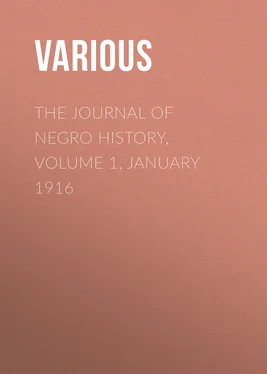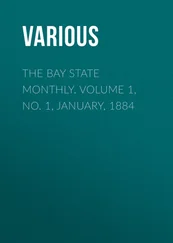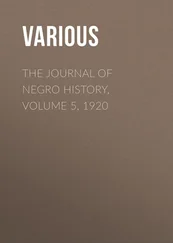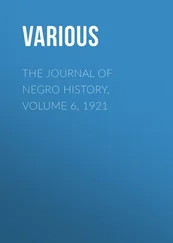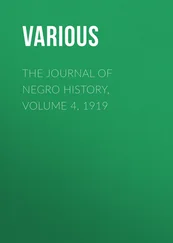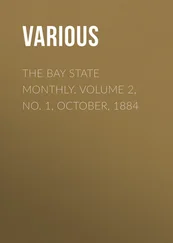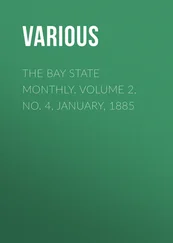Various - The Journal of Negro History, Volume 1, January 1916
Здесь есть возможность читать онлайн «Various - The Journal of Negro History, Volume 1, January 1916» — ознакомительный отрывок электронной книги совершенно бесплатно, а после прочтения отрывка купить полную версию. В некоторых случаях можно слушать аудио, скачать через торрент в формате fb2 и присутствует краткое содержание. Жанр: foreign_antique, periodic, История, foreign_edu, на английском языке. Описание произведения, (предисловие) а так же отзывы посетителей доступны на портале библиотеки ЛибКат.
- Название:The Journal of Negro History, Volume 1, January 1916
- Автор:
- Жанр:
- Год:неизвестен
- ISBN:нет данных
- Рейтинг книги:5 / 5. Голосов: 1
-
Избранное:Добавить в избранное
- Отзывы:
-
Ваша оценка:
- 100
- 1
- 2
- 3
- 4
- 5
The Journal of Negro History, Volume 1, January 1916: краткое содержание, описание и аннотация
Предлагаем к чтению аннотацию, описание, краткое содержание или предисловие (зависит от того, что написал сам автор книги «The Journal of Negro History, Volume 1, January 1916»). Если вы не нашли необходимую информацию о книге — напишите в комментариях, мы постараемся отыскать её.
The Journal of Negro History, Volume 1, January 1916 — читать онлайн ознакомительный отрывок
Ниже представлен текст книги, разбитый по страницам. Система сохранения места последней прочитанной страницы, позволяет с удобством читать онлайн бесплатно книгу «The Journal of Negro History, Volume 1, January 1916», без необходимости каждый раз заново искать на чём Вы остановились. Поставьте закладку, и сможете в любой момент перейти на страницу, на которой закончили чтение.
Интервал:
Закладка:
From this time until the forties the Negroes were a real issue in Cincinnati. During the late twenties they not only had to suffer from the legal disabilities provided in the "Black Laws," but had to withstand the humiliation of a rigid social ostracism. 17 17 Jay, "Miscellaneous Writings on Slavery," 27, 373, 385, 387; Minutes of the Convention of the Colored People of Ohio, 1849.
They were regarded as intruders and denounced as an idle, profligate and criminal class with whom a self-respecting white man could not afford to associate. Their children were not permitted to attend the public schools and few persons braved the inconveniences of living under the stigma of teaching a "nigger school." Negroes were not welcome in the white churches and when they secured admission thereto they had to go to the "black pew." Colored ministers were treated with very little consideration by the white clergy as they feared that they might lose caste and be compelled to give up their churches. The colored people made little or no effort to go to white theaters or hotels and did not attempt to ride in public conveyances on equal footing with members of the other race. Not even white and colored children dared to play together to the extent that such was permitted in the South. 18 18 Barber, "A Report on the Condition of the Colored People of Ohio," 1840.
This situation became more serious when it extended to pursuits of labor. White laborers there, as in other Northern cities during this period, easily reached the position of thinking that it was a disgrace to work with Negroes. This prejudice was so much more inconvenient to the Negroes of Cincinnati than elsewhere because of the fact that most of the menial labor in that city was done by Germans and Irishmen. Now, since the Negroes could not follow ordinary menial occupations there was nothing left them but the lowest form of "drudgery," for which employers often preferred colored women. It was, therefore, necessary in some cases for the mother to earn the living for the family because the father could get nothing to do. A colored man could not serve as an ordinary drayman or porter without subjecting his employer to a heavy penalty. 19 19 Proceedings of the Ohio Antislavery Convention, 1835, 19.
The trades unions were then proscribing the employment of colored mechanics. Many who had worked at skilled labor were by this prejudice forced to do drudgery or find employment in other cities. The president of a "mechanical association" was publicly tried in 1830 by that organization for the crime of assisting a colored youth to learn a trade. 20 20 Ibid.
A young man of high character, who had at the cabinet-making trade in Kentucky saved enough to purchase his freedom, came to Cincinnati about this time, seeking employment. He finally found a position in a shop conducted by an Englishman. On entering the establishment, however, the workmen threw down their tools, declaring that the Negro had to leave or that they would. The unfortunate "intruder" was accordingly dismissed. He then entered the employ of a slaveholder, who at the close of the Negro's two years of service at common labor discovered that the black was a mechanic. The employer then procured work for him as a rough carpenter. By dint of perseverance and industry this Negro within a few years became a master workman, employing at times six or eight men, but he never received a single job of work from a native-born citizen from a free State. 21 21 Proceedings of the Ohio Antislavery Convention, 1835, 19.
The hardships of the Negroes of this city, however, had just begun. The growth of a prejudiced public opinion led not only to legal proscription and social ostracism but also to open persecution. With the cries of the Southerners for the return of fugitives and the request of white immigrants for the exclusion of Negroes from that section, came the demand to solve the problem by enforcing the "Black Laws." Among certain indulgent officials these enactments had been allowed to fall into desuetude. These very demands, however, brought forward friends as well as enemies of the colored people. Their first clash was testing the constitutionality of the law of 1807. When the question came up before the Supreme Court, this measure was upheld. 22 22 African Repository , V, 185.
Encouraged by such support, the foes of the Negroes forced an execution of the law. The courts at first hesitated but finally took the position that the will of the people should be obeyed. The Negroes asked for ninety days to comply with the law and were given sixty. When the allotted time had expired, however, many of them had not given bonds as required. The only thing to do then was to force them to leave the city. The officials again hesitated but a mob quickly formed to relieve them of the work. This was the riot of 1829. Bands of ruffians held sway in the city for three days, as the police were unable or unwilling to restore order. Negroes were insulted on the streets, attacked in their homes, and even killed. About a thousand or twelve hundred of them found it advisable to leave for Canada West where they established the settlement known as Wilberforce. 23 23 African Repository , V, 185.
This upheaval, though unusually alarming, was not altogether a bad omen. It was due not only to the demands which the South was making upon the North and the fear of the loss of Southern trade, but also to the rise of the Abolition Societies, the growth of which such a riotous condition as this had materially fostered. In a word, it was the sequel of the struggle between the proslavery and the anti-slavery elements of the city. This was the time when the friends of the Negroes were doing most for them. Instead of frightening them away a group of respectable white men in that community were beginning to think that they should be trained to live there as useful citizens. Several schools and churches for them were established. The Negroes themselves provided for their own first school about 1820; but one Mr. Wing had sufficient courage to admit persons of color to his evening classes after their first efforts had failed. By 1834 many of the colored people were receiving systematic instruction. 24 24 For a lengthy account of these efforts see Woodson's "The Education of the Negro Prior to 1861," 245, 328, 329; and Hickok, "The Negro in Ohio," 83, 88.
To some enemies of these dependents it seemed that the tide was about to turn in favor of the despised cause. Negroes began to raise sums adequate to their elementary education and the students of Lane Seminary supplemented these efforts by establishing a colored mission school which offered more advanced courses and lectures on scientific subjects twice a week. These students, however, soon found themselves far in advance of public opinion. 25 25 Fairchild, "Oberlin: Its Origin, Progress and Results."
They were censured by the faculty and to find a more congenial center for their operations they had to go to Oberlin in the Western Reserve where a larger number of persons had become interested in the cause of the despised and rejected of men.
During the years from 1833 to 1836 the situation in Cincinnati grew worse because of the still larger influx of Negroes driven from the South by intolerable conditions incident to the reaction against the race. To solve this problem various schemes were brought forth. Augustus Wattles tells us that he appeared in Cincinnati about this time and induced numbers of the Negroes to go to Mercer County, Ohio, where they took up 30,000 acres of land. 26 26 Howe, "Historical Collections of Ohio," 356.
Others went to Indiana and purchased large tracts on the public domain. 27 27 The Southern Workman , XXXVII, 169.
Such a method, however, seemed rather slow to the militant proslavery leaders who had learned not only to treat the Negroes as an evil but to denounce in the same manner the increasing number of abolitionists by whom it was said the Negroes were encouraged to immigrate into the State.
Интервал:
Закладка:
Похожие книги на «The Journal of Negro History, Volume 1, January 1916»
Представляем Вашему вниманию похожие книги на «The Journal of Negro History, Volume 1, January 1916» списком для выбора. Мы отобрали схожую по названию и смыслу литературу в надежде предоставить читателям больше вариантов отыскать новые, интересные, ещё непрочитанные произведения.
Обсуждение, отзывы о книге «The Journal of Negro History, Volume 1, January 1916» и просто собственные мнения читателей. Оставьте ваши комментарии, напишите, что Вы думаете о произведении, его смысле или главных героях. Укажите что конкретно понравилось, а что нет, и почему Вы так считаете.
